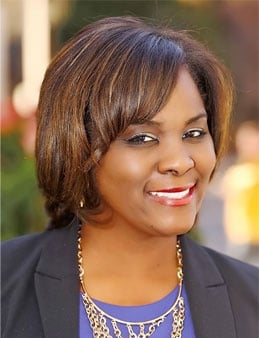 We have a digital divide problem in this country that impacts both urban and rural America, explains Nicol Turner Lee, senior fellow at The Brookings Institution. "In urban areas, we see the lack of competition among broadband providers that inflates the pricing of broadband services. In rural areas, we see a combination of geographic terrain issues and affordability concerns for people when it comes to accessing jobs and other income opportunities."
We have a digital divide problem in this country that impacts both urban and rural America, explains Nicol Turner Lee, senior fellow at The Brookings Institution. "In urban areas, we see the lack of competition among broadband providers that inflates the pricing of broadband services. In rural areas, we see a combination of geographic terrain issues and affordability concerns for people when it comes to accessing jobs and other income opportunities."The combination of those things creates a generation of digital haves and have-nots, observes Turner Lee, who is also director of the Center for Technology Innovation and serves as co-editor-in-chief of TechTank. Those who don't have digital access have a harder time connecting with everything from social services and doctor's appointments to educational and economic opportunities. The divide has come into even greater relief during the COVID-19 pandemic, and it's creating a digital underclass, described in Turner Lee's soon-to-be-released book, "Digitally Invisible: How the Internet Is Creating a New Underclass."
This summer, Turner Lee spoke to NeighborWorks America as our network organizations were grappling with the impact of the digital divide on residents, who were also coping with effects of the pandemic. It's a subject NeighborWorks America President & CEO Marietta Rodriguez frequently highlights. "Broadband is no longer a luxury, but a critical utility service needed to participate fully in our nation's economy, culture and society," she has said.
Turner Lee spends many of her days on backroads, talking to individuals to put a human face on what life without broadband means. In one community she visited, where residents were dealing with opioid addiction, a lack of connectivity meant that a social service case manager had to drive two hours in each direction to check on residents in need of services. In her travels to rural Maryland, small farmers didn't have the ability to order basic supplies, a stark truth even before the pandemic. During the pandemic, K-12 students were greatly impacted by digital inequities; Turner Lee points to studies that show nine million children were without internet and a device to do schoolwork. In referencing these cases, Turner Lee shares, "We've not only left these people behind in digital connectivity, we've left these people behind in caring about them."
Turner Lee is currently focusing her research on the rural south and rural Midwest to quantify the depth of the digital divide among these populations, whose experiences are often opaque in the U.S. In parts of the Mississippi Delta, for example, the lack of basic infrastructure already makes it hard for these populations. On tribal lands, limited broadband resources can compound other systemic inequalities. It is Turner Lee's goal to compel state and national leaders to focus on the areas of America that have been left behind and close the rural divide. "The best way to do that," she says, "is by creating a national broadband map that shows where there's an overbuild of broadband access and under-build. Without that map, we're playing a poker game, betting on the areas that have the most impact."
The pandemic showed that those who were least connected were often those with the least resources, Turner Lee relates. "It showed how economically fragile we are." NeighborWorks network organizations jumped in where they could. Fahe, for instance, handed out 530 tablets across 19 counties in Tennessee. The organization has put its support behind a national, comprehensive, broadband deployment strategy and reports one of its organizations in West Virginia working on employing connectivity in a future development.
"Investing in broadband networks for our digitally isolated areas will not only help generations of American workers have a place in the emerging modern economy, but it will also ensure access to telehealth services, educational resources, and connectivity with employers, family, and social support networks," says Ted Boyatt, director of communications for Fahe.
Sarah Kackar, NeighborWorks' director of Rural Initiatives, also points to organizations like Centro Campesino Farmworker Center, Inc., providing devices and digital trainings to farmworkers in Florida, and Way Finders, Inc., in Massachusetts, leading efforts to form a coalition of local elected and community leaders to increase access to broadband and devices for low-income residents in their town.
"NeighborWorks organizations across rural America are implementing varied programs to help shrink the digital divide through increased access and training for community residents, while larger cross-sector efforts continue to expand more permanent broadband deployment to these areas," she says.
NeighborWorks network organizations need resources to help ensure that affordable housing is connected to broadband, explains Turner Lee. "We need to make sure that the funds are there to bring broadband to low-income housing in the same way that funds are available to ensure access to heat and electricity. Every housing unit that is subsidized by state and local governments should have a connection to the internet."
Steps the affordable housing community can take to help, according to Turner Lee, include:
- Provide hotspots in public housing. "Whether it's in community areas, in the technology centers or the recreational sites behind or in front of the buildings, we've got to have open air hot spots for residents to access online resources."
- Promote the Emergency Broadband Benefit. Congress authorized money to offset the cost of monthly broadband service and a device for eligible individuals: a $50 subsidy toward monthly broadband service and $100 toward a personal device.
- Think about "futureproofing" affordable housing communities. Already, housing is becoming more sustainable and greener. "Now is time to add broadband into the mix," she says. "Without access, no one can hear your concerns."

